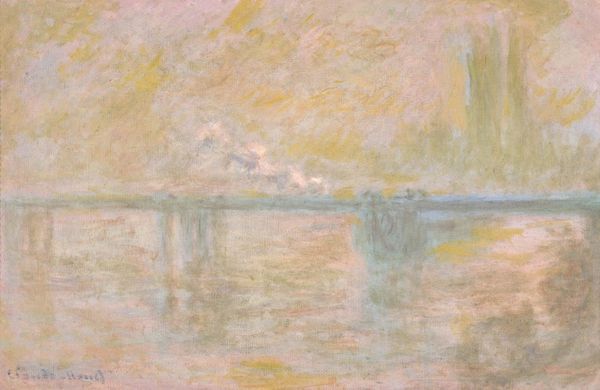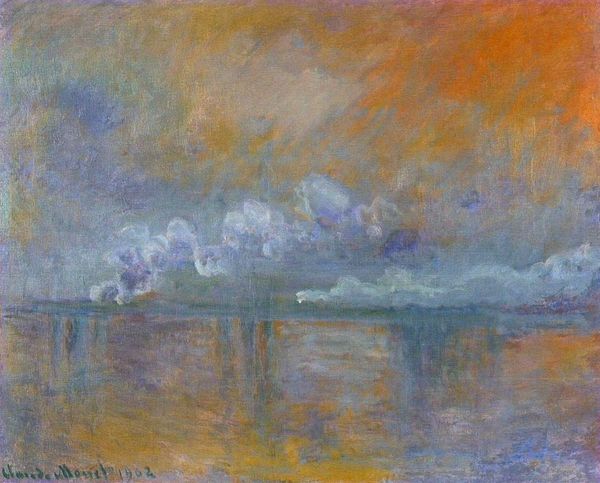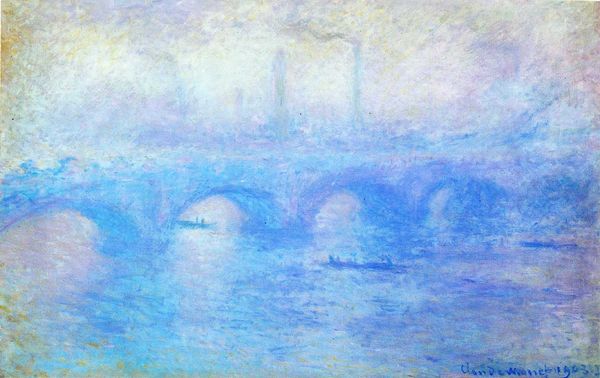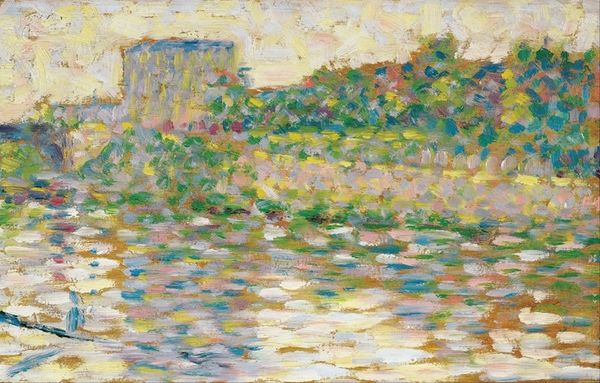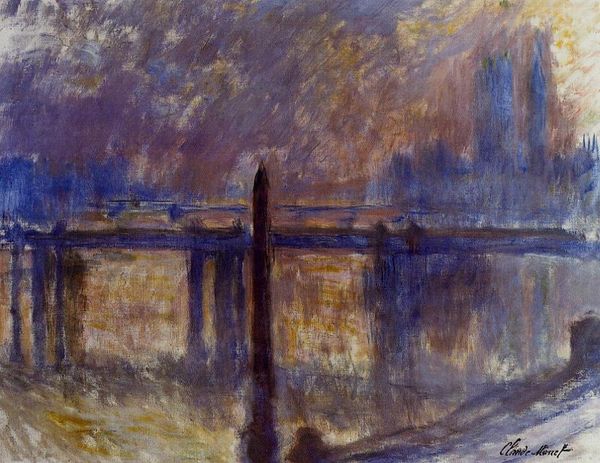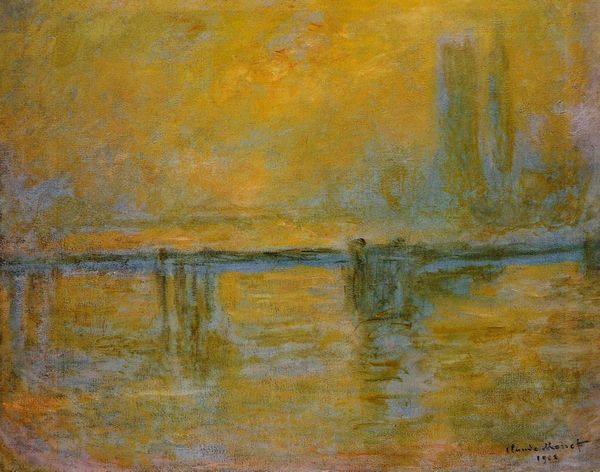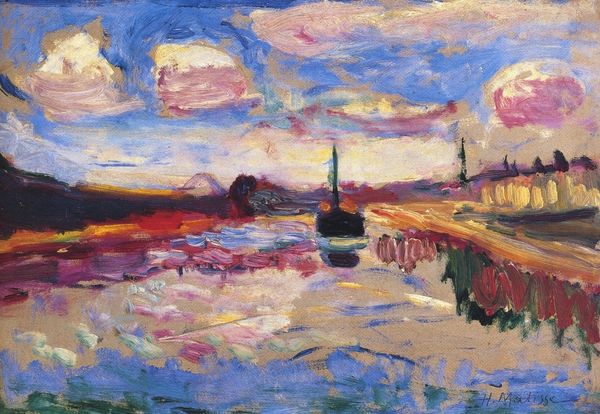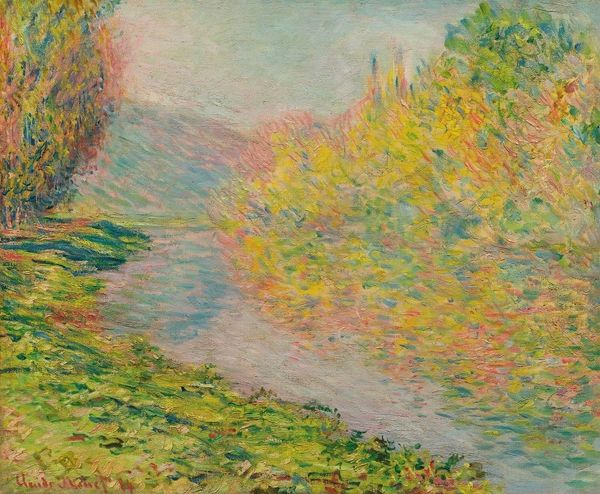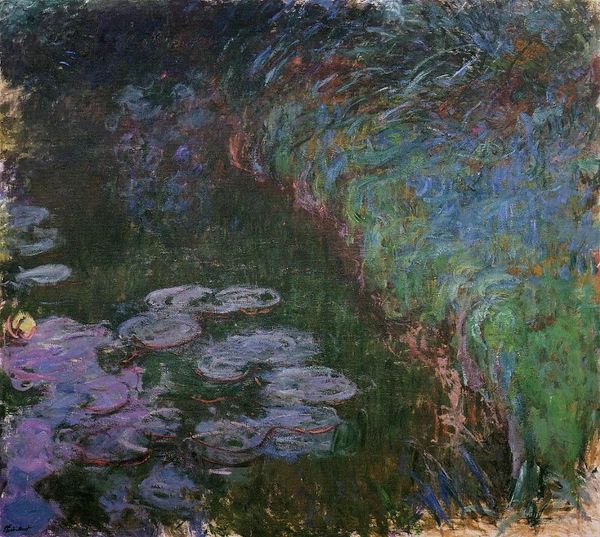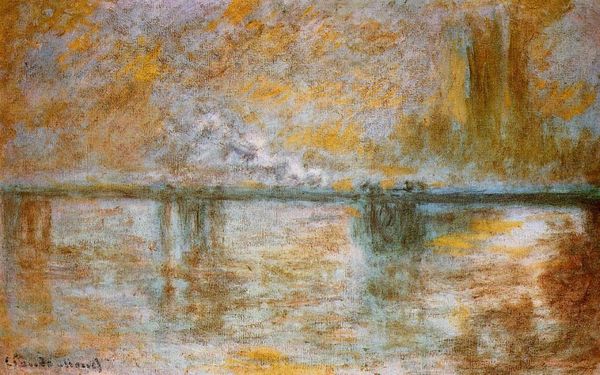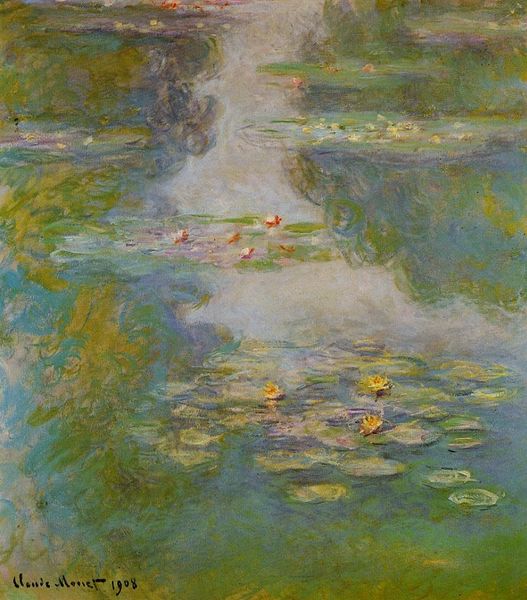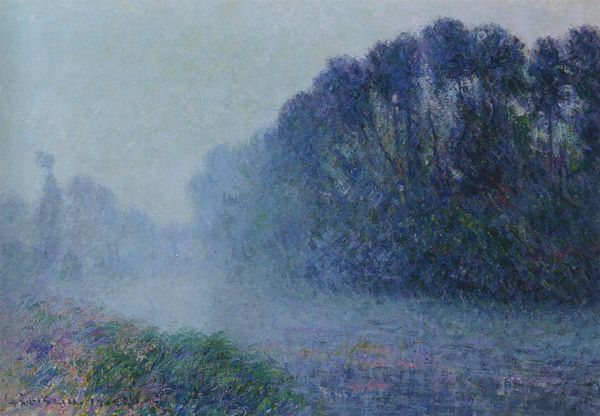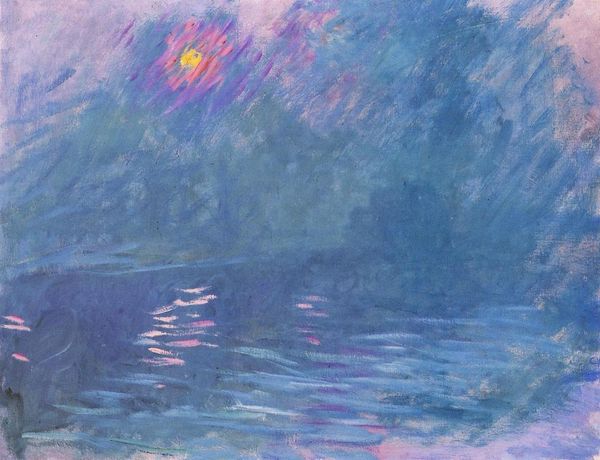
Copyright: Public domain
Editor: Here we have Claude Monet's "Waterloo Bridge" from 1901, rendered in oil paint. There's an atmospheric haziness to it; it feels less about architectural details and more about capturing a fleeting moment. How do you interpret this work? Curator: It is interesting how you pinpoint the idea of a fleeting moment. The image captures the mutability of industrial modernity, using the bridge as a visual anchor. Monet's rendering dissolves into atmospheric perspective that can stand as a symbolic metaphor for London at the height of Empire. The pink and yellow, contrasting with the deep blues, create a certain cognitive dissonance. What might that represent? Editor: I hadn't thought about cognitive dissonance! Maybe it reflects the disorienting pace of change at the time, the exciting, yet overwhelming nature of progress. Curator: Exactly! Notice how Monet diminishes the architectural detail. Instead he magnifies our sensory and subjective experiences of modern life and suggests our individual perceptions are inherently fragile, much like the ephemeral atmospheric effects of fog. Bridges carry a historical and psychological weight beyond physical presence. Can you imagine other instances where the imagery of bridges or fog has represented transformation or mystery? Editor: In film noir, fog often represents danger, obscuring what's really there, while a bridge could represent the path toward change or a dangerous crossing. Curator: Precisely! Monet taps into that rich symbolic history, but then personalizes it with impressionistic technique and vivid colors. Editor: So much more than just a bridge in a painting. I definitely see it differently now. Curator: And that, in essence, is the beauty of visual symbols.
Comments
No comments
Be the first to comment and join the conversation on the ultimate creative platform.
